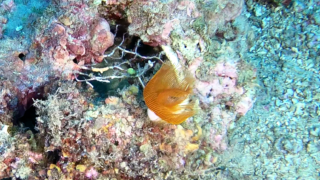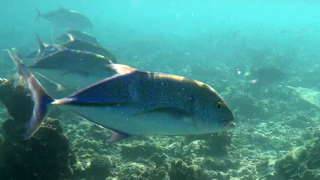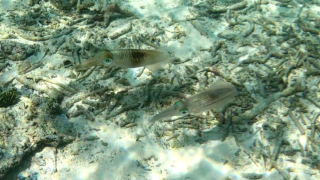The Bluespotted Grouper
Cephalopholis argus, also known as roi, bluespotted grouper, and celestial grouper, belongs Actinopterygii class, Peciformes order, Serranidae family; is a fish from the Indo-Pacific which is variously a commercial gamefish, an invasiv species, and occasionally an aquarium resident. Its species name comes from its resemblance to the “hundred staring eyes” of the monster Argus in Geek mytology. This his is a medium-sized fish that can reach a length of 60 centimeters. Small individuals are dark brown with hundreds of small, dark-edged iridescent blue spots. Larger specimens sometimes develop four to six lighter vertical bars on the back half of its body. cernia pavone

The species is extremely widely distributed, occurring in warm waters from the Red Sea to South Africa and east to French Polynesia and the Pitcairn group. It is also present in northern Australia, Lord Howe Island, and Japan, and has been introduced to the Hawaiian Islands. It makes use of a variety of habitats but prefers the exposed fronts of reefs, at depths of up to 40 m Hunting, they lie on the bottom and surge forward, preferring juvenile surgeonfish an crustaceans. Alternatively they may hover motionless in the water column before attacking. This grouper may follow and cooperate with another predator species, such as an octopus or eel or camouflage themselves in a school of surgeonfish. Multiple individuals may cooperate to harass an eel to get it to flush prey for them. In the Red Sea, they hunt in the morning and evening.

The species typically sit on a coral head, retreating when startled. Red Sea males defend harems of 2–6 females in territories ranging up to .5 acres (0.20 ha). Each female defends part of the territory from the other females. The male visits each female daily, raising his dorsal fin to signal his approach. The females emerges from hiding, erecting her own dorsal fin and changing to a lighter color. They swim together, rubbing flanks before he departs until the next day. Territorial disputes may involve “color fights” in which two males positioning themselves at right angles to each other. They then darken their color and repeatedly switch their bars from dark to light. The loser becomes pale and retreats. If the color fight ends in a draw, the two males may attack each other.
(extract from Wikipedia)






















